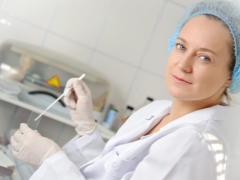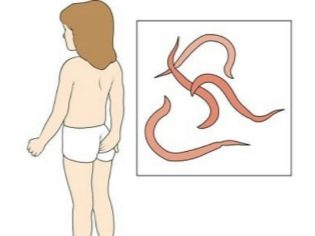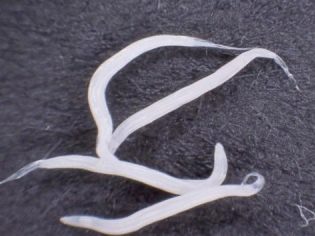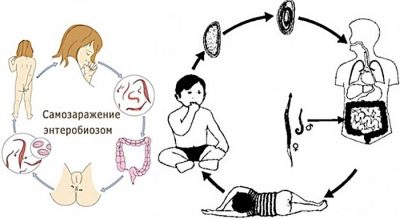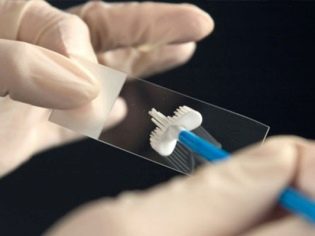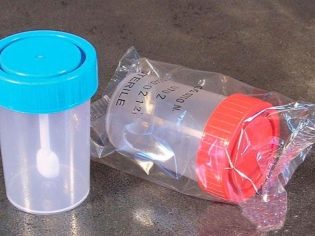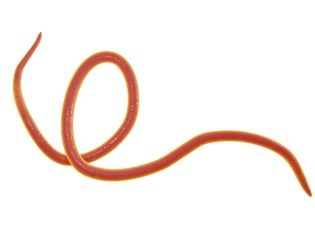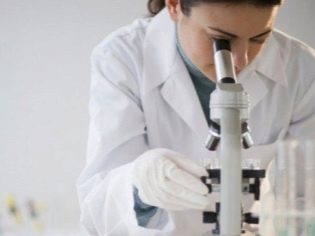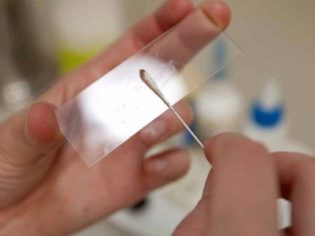Scraping for enterobiasis in children
Infection with helminths is quite common in children at very different ages. Enterobiasis is widespread throughout the world. To establish the correct diagnosis, a qualitative diagnosis is required.
What it is?
It is possible to diagnose enterobiosis (infection with pinworms) by conducting various diagnostic tests. They are very safe and do not cause any pain in the child. Enterobiasis is a widespread disease. Children of the most different age can be ill. This parasitic pathology is caused by special worms (worms), which are called pinworms.
The name of the disease is not accidental. Pinworm body shape is usually elongated with a pointed end. These parasites are predominantly white or yellow, however, black individuals can also be found. Pinworms in the course of their life cause the child the appearance of numerous adverse symptoms. Females are able to leave the anus for laying eggs on the skin. This causes the child to develop pronounced itching and irritation in the anogenital region.
Diagnosis of enterobiasis is very important. A timely diagnosis helps doctors prescribe timely treatment. Without the use of drugs in a baby, repeated repeated self-infections can occur - re-invasions. In this case, the duration of the course of the disease increases, and the adverse symptoms bother the child for a long time.
Toddlers usually become infected with enterobiasis through dirty hands. Sick child, combing the inflamed areas of the skin, often puts the eggs of worms under the nails. Poor personal hygiene leads to the fact that he can infect other children and members of his family. Pinworms can be in the environment for a long time without losing its vitality. The detrimental effect on them has only the effect of high temperature or the use of disinfectants in high concentrations.
It is important to note that the disease can occur in infants and adolescents. Boys suffer as often as girls.
The technique of taking biological material for analysis is very important. Currently, there are several laboratory methods for determining helminth eggs. One of these tests is considered scraping for enterobiasis.
When is the analysis done?
Using this test, you can eliminate or detect helminth eggs. There are many situations in which the determination of the presence of signs of helminthiasis is required. The study is conducted when the baby has any signs of parasitic pathology, which may be enterobiasis. In order to confirm the diagnosis, a scraping is required, followed by interpretation of the result.
Also, this analysis is conducted for children. according to certain "social" indications. Most often, it is necessary to resort to carrying out the test before visiting the child’s pool, when preparing a personal medical book for adolescents, for planned hospitalization. To perform this analysis, the child is usually given a referral from a children's clinic. Writes his pediatrician during the reception.
You can also take an analysis yourself, for example, if the parents do not want to seek medical advice.
Technique of
At present, there are several methods to determine the worms. The most common of them - according to the method of Graham. The study of biological material for this test is carried out three times. This study allows to identify not only pinworms, but also ascarids, whipworms, wide Lentera, bovine and pork tapeworms, schistosomes and other parasites. This method has been used in children's practice for quite a long time.
Biological material can be collected in different ways. Most often used for this special adhesive tape. It helps to "collect" all the helminth eggs on the skin, and in some situations even the remnants of the bodies of parasites. Also to collect material you can use a cotton swab or wooden spatula.
Collect biological material as carefully as possible so as not to frighten the baby and not cause him pain.
As a rule, the material is taken in the laboratory. However, you can collect it yourself at home. In this case, the main thing is to follow the basic rules for collecting material. Often parents can not qualitatively collect biological material and deliver it for research correctly, so the sampling is carried out in a special bacteriological laboratory.
Before the procedure, be sure to prepare the baby. This is especially important to do if the child is already a teenager. Explain to him that this is not at all painful and necessary for the disease to pass. A child who is prone to violent enough to show emotions should turn the study into an exciting game. Doctors recommend for this to tell the kid the story that he is a future cosmonaut and he needs to pass this analysis before flying on a spacecraft.
To collect material in the laboratory in children, lab technicians usually use cotton buds. In some cases, this procedure can be unpleasant, but with proper preparation of the child will not bring the baby a strong concern.
Usually, kids who have undergone such a procedure forget about it after a couple of hours.
For the collection of biological material using a cotton swab, laboratory technicians use a specific algorithm. Cotton wool on the tip of the wand is usually pre-wetted with glycerin or normal saline. This helps not only to properly collect the material, but also not to cause the child soreness.
Usually, the procedure for taking a biomaterial consists of several stages:
- The laboratory assistant opens the container with sterile gloves.
- The subject leans forward slightly and pushes the buttocks apart. Mom helps a little child with this. It is important to note that the presence of mommy together with the baby helps him to feel more relaxed. Older children and teens do this research on their own.
- The laboratory assistant pulls out a rod and gently inserts it into the area of the anal passage in circular motions. This technique allows to obtain a sufficient amount of biological material for future analysis. During the collection of material, the child should not feel pain. He usually feels only a little discomfort. After collecting the material on a cotton swab, usually a small amount of feces remains, which may also contain remnants of worms and their eggs.
- After the material is collected, the laboratory technician places the rod in a container and tightly closes the lid.
- The final stage of the procedure is the departure of the material to the bacteriological laboratory. This is where the research will be carried out on pinworm eggs. It is important to note that the collected material will be suitable for analysis within 8 hours. In order to get a fairly reliable result - it is stored in a refrigerator.
The second method, which is used more in the smallest patients, is to collect material for smear and scraping using adhesive tape. In this case, the laboratory technician sticks a special adhesive tape to the anal area, and then removes it carefully. Also, with the help of a cotton swab, the laboratory technician takes the biomaterial for the smear. Adhesive tape is glued to a glass slide, and then research is conducted.
In some cases, the material may be taken at the position of the child not standing, but on its side.
Preparation at home
Donate analysis should be carried out after the preliminary preparation. For this study, it is quite simple. It is important to note that the training should still be carried out, as this will help to achieve a more accurate result. Psychological attitude is also very important. It helps to avoid an attack of hysteria or strong fright in a child during the procedure of taking material.
Sometimes parents independently discover signs of enterobiosis in a baby. Most often this occurs in infants and toddlers of very young age. During the daily hygiene procedures, mummy can detect worms or pay attention to severe irritation and redness of the anogenital zone. Normally, mucous membranes and skin in this area should be pale pink. Any inflammations and especially traces of scratching should be a reason for seeking medical advice.
Usually pinworms crawl out of the anus at night. It is at this time that they are more often found. However, the diagnosis of enterobiasis is not always limited to the visual detection of parasites.
Some babies do not have any external signs of the disease. Such children are analyzed and scraped for pinworm detection, which allows the diagnosis to be made more accurately.
Doctors recommend collecting tests after active laying of pinworms eggs. This is usually manifested in a child with a sleep disorder. Active vital activity of pinworms and creeping them out of the anal passage at night contributes to the fact that the baby does not sleep well, he has bad dreams or wakes up several times during the night. It is after such a "hectic" night and should collect biomaterial.
Experts recommend not to flush the baby before taking the material. This will help to preserve the remnants of worms and their eggs on the anogenital zone. Active washing away can only reduce the credibility of the future analysis. To obtain a more accurate result, the study should be carried out several times a week. Usually, doctors recommend taking a sample of the material with the subsequent study at least three times.
The collection of material for analysis is best done in the morning, before the act of defecation. Biomaterial is collected from perianal folds. Some parents decide to collect the biomaterial for research at home. To do this, often used conventional cotton swabs, which are also wetted in glycerin or saline. Place the stick in a sterile container for collecting urine or feces.
It is important to remember that when collecting biomaterial independently, a very important step is to transport it to the laboratory. You can store the material only in the refrigerator, preferably not more than 3-4 hours.
Quite often, a self-assembled biomaterial at home is unsuitable for research, since the sampling technique or the conditions of transportation and storage are violated.
Evaluation of results
It is important to note that a correctly assembled biomaterial allows for fairly accurate bacteriological analysis. In this case, the reliability of the result is 98-99%. To conduct a more accurate survey, repeat these analyzes several times in 6-8 days. Usually enough 2-3 times.
A positive analysis suggests that pinworms are present in the children's body. In this case, the purpose of treatment is required, which consists in taking special antiparasitic drugs. Frequency of administration, dosage and duration of treatment are usually determined individually, taking into account the age of the baby, his weight, and the presence of concomitant chronic diseases.
Enterobiasis scrapes have been used for quite a long time in pediatric practice. They very accurately identify any manifestations of this parasitic disease. It is important to note that improper sampling of a biomaterial or violation of the analysis technique can lead to false negative results. The results of such tests usually indicate that there are no pinworms in the child’s body, but this is a mistake.
It is to eliminate false-negative results. analysis and carried out several times during the week. Such a multiplicity of research allows you to accurately identify the presence or absence of worms in the children's body.
If the baby has signs of enterobiasis, but the analysis is negative, then additional diagnostics are required. Usually it consists in carrying out an immunological analysis for the detection of specific antibodies to pinworms.
We suggest you to deal with this ailment together with Elena Malysheva in the next video.
